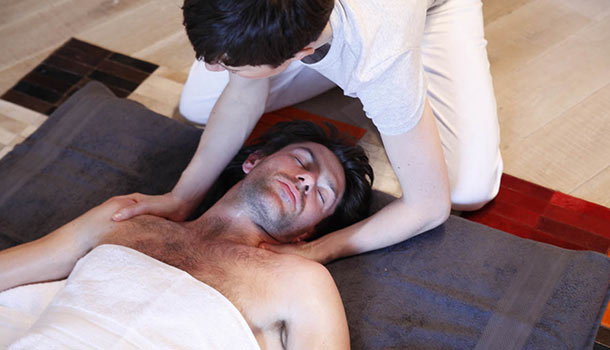Traditional Chinese medicine
China, 2005
Paris, from 2016 to 2020
The balance between sky and earth, between man and his environment
Traditional Chinese medicine, which is more than 2500 years old, is a medicine that considers the being in its globality and its social and climatic environment. The main quality of a traditional Chinese doctor is his sense of observation and his intelligent reasoning from the questionnaire to the diagnosis and treatment. Once you step into this ancestral medicine, you will quickly understand that your life will not be enough to go around it.
Tui Na massage is an integral part of the program in the main chapters studied. In theory, a patient massaged every week should not need to use needles if one assumes that before the massage, the tongue and pulse observation has been done correctly and that Tui Na addresses the deficiencies and fullness of the patient.
If massage is not enough, the practitioner will use various tools such as needles, cupping, moxibustion, plum blossom hammer, or Gua Sha.

Learning Traditional Chinese Medicine
by Chantal Lehmann
The basics of Traditional Chinese Medicine
In 1980, at the age of 5, I was treated for the first time with acupuncture in my small town in Alsace, with a population of 16,000 at the time, by a physiotherapist. As I called him, the “gentleman who stings” had just trained in China and in one of the first schools in Paris. Without knowing it, he had planted the seed of “everything is possible if you connect to yourself (…)”. This state of concentration allows the development of the intention that the therapist must put into his gesture, increasing the desired effects tenfold. The understanding of the power of the intention one puts in one’s hands was there. As soon as I went to China for my first professional trip, I wanted to stay there for three more weeks to start studying the fundamentals of traditional Chinese medicine.
Chantal Lehmann received her first diploma on November 11, 2005, after having followed a 3-year course at the Wah Har College, a school of traditional Chinese medicine in Hong Kong, leading to stays of several weeks or months.
Deepening the learning
Afterwards, I went to two schools in Paris and met Professor Li Jianzhong. This professor demonstrated how to do 20 push-ups on his thumbs at more than 80 years old to make us understand the power that can be born in the body and reflected in the fingertips. In the clinic where he works in China, he can treat up to 60 patients daily and cure or relieve mild to relatively severe conditions.
Professor Li Jianzhong allowed me to learn more about my puncture method, so I work in the “Chinese way” today.
I have completed my four years of training in traditional Chinese medicine in Paris and will graduate in the summer of 2020.